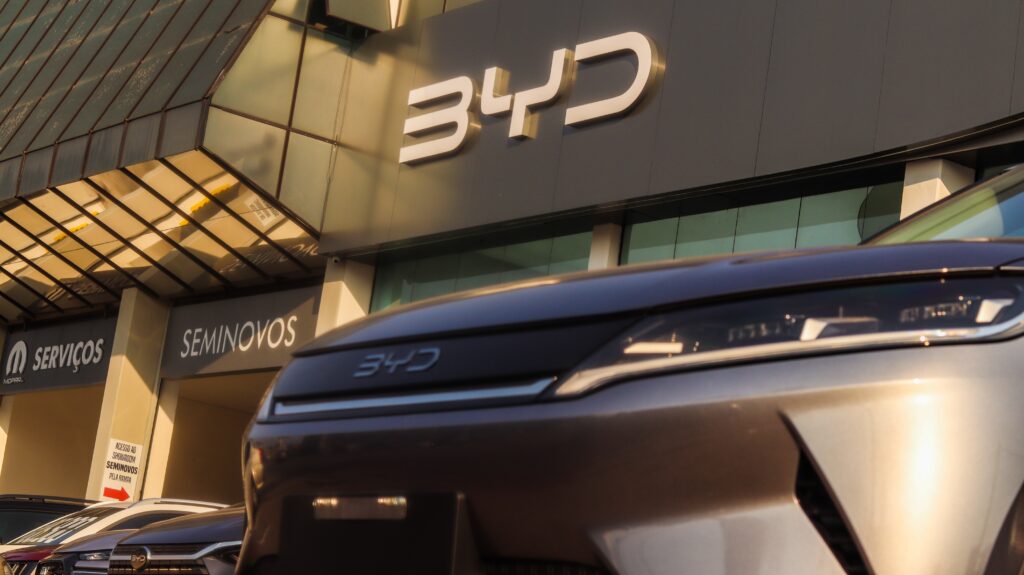Chinese electric vehicle maker BYD has surpassed Tesla in total revenue for 2024. The Shenzhen-based company reported a 29% rise in revenue, reaching 777 billion yuan ($107 billion). Meanwhile, Tesla’s revenue stood at $97.7 billion during the same period. This marks a significant shift in the global electric vehicle market, highlighting the growing strength of BYD’s diverse vehicle offerings.
Affordable Models and Hybrid Sales Drive BYD’s Success
One major factor behind BYD’s revenue growth is its strong hybrid vehicle sales. In 2024, the company sold 1.76 million electric vehicles and 2.5 million hybrid models. This brought BYD’s total vehicle sales to 4.3 million, surpassing Tesla’s 1.79 million electric cars. Tesla does not offer hybrid models, giving BYD an advantage in total sales volume.
The company has also focused on affordability to attract more customers. BYD recently launched the Qin L, a competitively priced electric vehicle. The Qin L starts at 119,800 yuan ($16,500), which is significantly lower than Tesla’s Model 3, priced at 235,500 yuan ($32,500) in China. This pricing strategy aims to capture budget-conscious consumers, especially as China’s economy slows and local government debt rises.
BYD’s Innovation Gains Momentum
BYD is also making strides in innovation. In February, the company introduced its “God’s Eye” driver-assistance technology, which now comes standard in all BYD models at no extra cost. This system aims to improve driving safety and convenience, positioning BYD as a strong competitor in the smart vehicle sector.
Additionally, BYD unveiled a new charging system capable of fully charging a battery in just five minutes. This is three times faster than Tesla’s superchargers, which require about 15 minutes for a full charge. Faster charging times could significantly impact consumer preferences, as convenience remains a key factor in EV adoption.
On Sunday, BYD launched another new model to increase competition against Tesla’s popular electric vehicles. These continuous innovations show BYD’s commitment to advancing electric vehicle technology and expanding its market share.
Tesla Faces Challenges as Musk Faces Political Controversy
While BYD thrives, Tesla faces growing challenges. CEO Elon Musk has come under criticism for his political ties and public statements. His close association with former U.S. President Donald Trump has sparked backlash, especially after he was appointed to lead the Department for Government Efficiency. This move triggered widespread protests and raised concerns over Musk’s political influence.
Musk has also faced criticism for supporting Germany’s far-right AfD party and attacking British politicians, including Prime Minister Keir Starmer. These actions have led to increased scrutiny of Tesla and Musk’s global influence.
Global Trade Tensions Impact the EV Market
Trade policies have also played a role in shaping the electric vehicle industry. The U.S. and European Union have imposed tariffs on Chinese electric vehicle imports, which could impact BYD’s international expansion. However, despite these challenges, BYD’s stock surged over 50% in 2024, demonstrating strong investor confidence in the company’s growth.
Veteran American investor Warren Buffett remains a major supporter of BYD, reinforcing the automaker’s credibility and financial stability. Buffett’s backing adds further confidence to the company’s long-term prospects.
The Future of BYD and Tesla
As BYD continues to expand, Tesla may need to adapt its strategy to remain competitive. The Chinese company’s strong hybrid sales, affordable pricing, and rapid technological advancements give it a powerful position in the EV market. Meanwhile, Tesla must navigate political controversies and increasing competition while maintaining its reputation as a leader in electric vehicle innovation.
The ongoing battle between these two giants will shape the future of the electric vehicle industry. For now, BYD has taken the lead in revenue, signaling a shift in market dynamics. Investors and consumers will closely watch how both companies respond to these changes in the coming years.


